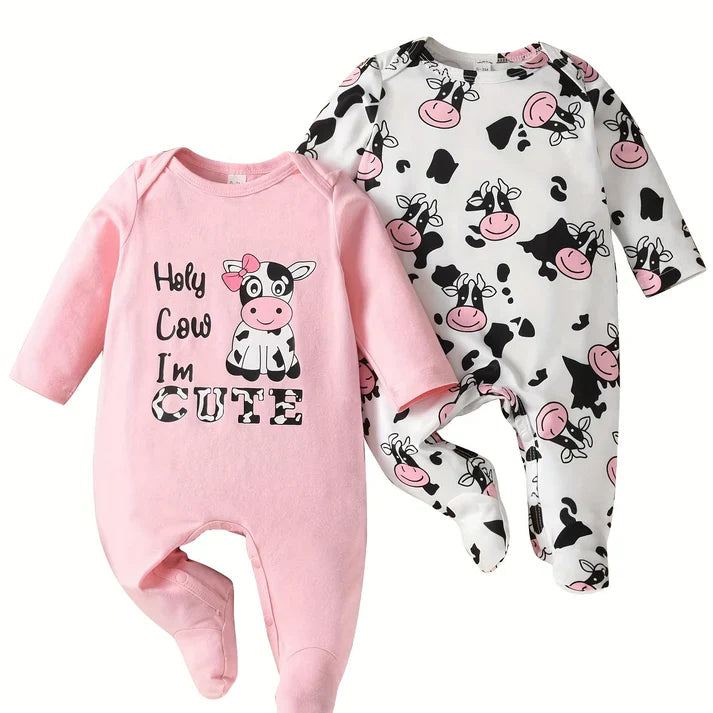
Baby's All-Season Clothing Needs: Practical, Comfy, and Weather-Ready
Baby's All-Season Clothing Needs: Practical, Comfy, and Weather-Ready
A friendly, practical guide to dressing your baby through spring, summer, fall, and winter — what to buy, how to layer, and how to care for tiny clothes so they last.
Why season-aware baby clothing matters
Babies can't tell you when they're too hot or too cold, and their temperature regulation is still developing. The right clothing keeps them comfortable, reduces fussiness, and helps prevent heat loss or overheating. With a few smart pieces and layering habits, you can handle any forecast without overbuying.
Season-by-season essentials
Spring (mild, changeable)
- Light long-sleeve bodysuits and cotton pants.
- A lightweight cardigan or zip hoodie for quick warmth.
- Breathable hats for sun or wind protection.
Summer (warm to hot)
- Short-sleeve bodysuits, lightweight rompers, and sun hats with a brim.
- Loose cotton or bamboo fabrics that wick moisture.
- Light sleep sacks instead of heavy blankets for naps.
Fall (cooling down)
- Layer-friendly pieces: long underwear, knit pants, and a cozy sweater.
- Water-resistant outer layer for rainy days (lightweight rain jacket).
- Cuffed mittens or booties for wind protection.
Winter (cold)
- Thermal base layers (not too tight), insulated snowsuit for outdoor trips.
- Warm hats that cover the ears, mittens, and insulated booties.
- One warm outer shell (waterproof + windproof) rather than many thin coats.
Key materials & why they work
Choose fabrics with the season and baby's skin in mind:
- Cotton: Soft, breathable — great for spring and summer.
- Bamboo: Naturally breathable and soft; excellent for sensitive skin.
- Merino wool: Warm, moisture-wicking, and surprisingly breathable for cooler months.
- Fleece & insulated synthetics: Good for outer layers and snow gear but avoid against skin if baby is sensitive.
Quick fabric rule:
Natural fibers next to the skin (cotton, bamboo, merino) + functional outer layers when needed.
Master the art of layering
Layering is the single best strategy for handling temperature changes. Think: base layer → insulating layer → outer shell.
- Base layer: Soft, snug bodysuit or long underwear (wicking fabrics in hot or active weather).
- Insulating layer: Cotton sweater, fleece, or merino top; adds warmth without bulk.
- Outer shell: Windproof or waterproof coat for outdoor protection.
When you go inside, remove a layer. When you go out, add a layer. Check baby’s neck or chest (not hands/feet) to judge temperature.
Sizing, fit, and care
Fit & sizing
- Buy for growth — babies grow fast. One or two sizes up for outerwear is fine.
- Look for adjustable features (elastic waists, fold-over cuffs) to extend use.
- For sleepwear, prioritize proper fit and flame-resistant materials where required.
Care tips to keep clothes soft and safe
- Wash new clothes before wearing to remove manufacturing residues.
- Use gentle, fragrance-free detergent for baby-sensitive skin.
- Avoid fabric softeners on items that need absorbency (like towels) and on flame-resistant sleepwear which can lose properties.
- Repair small holes and loose trims quickly — safety first.
Seasonal packing checklist (quick view)
| Item | Spring | Summer | Fall | Winter |
|---|---|---|---|---|
| Bodysuits / onesies | ✓ | ✓ | ✓ | ✓ |
| Light cardigan / hoodie | ✓ | ✓ | ||
| Sun hat | ✓ | ✓ | ||
| Sleep sack / wearable blanket | ✓ | lightweight ✓ | ✓ | warm ✓ |
| Insulated snowsuit | optional | ✓ | ||
| Waterproof outer layer | light ✓ | ✓ | ✓ |
Smart shopping & sustainability
Babies outgrow clothes quickly — being intentional saves money and waste.
- Buy high-use items (onesies, pajamas) new and from trusted fabrics; consider hand-me-downs or secondhand for seasonal or trendy pieces.
- Choose versatile colors and reversible pieces when possible.
- Prioritize durability for outerwear and comfort for everyday wear.
If you find a high-quality item on sale, buy one size up — you’ll thank yourself later.
Final notes
Keeping a baby comfortable year-round is more about smart layering, choosing the right fabrics, and packing a few reliable staples than buying an outfit for every weather surprise. Start with breathable base layers, add an insulating layer, and finish with a protective outer shell when needed. Check frequently, adjust layers, and prioritize safety in sleepwear and outerwear.
Want a printable checklist or a seasonal shopping list tailored to your climate? I can make one for you — tell me your climate (e.g., "cold winters, mild summers") and I'll format a one-page shopping list.
Create my seasonal shopping list